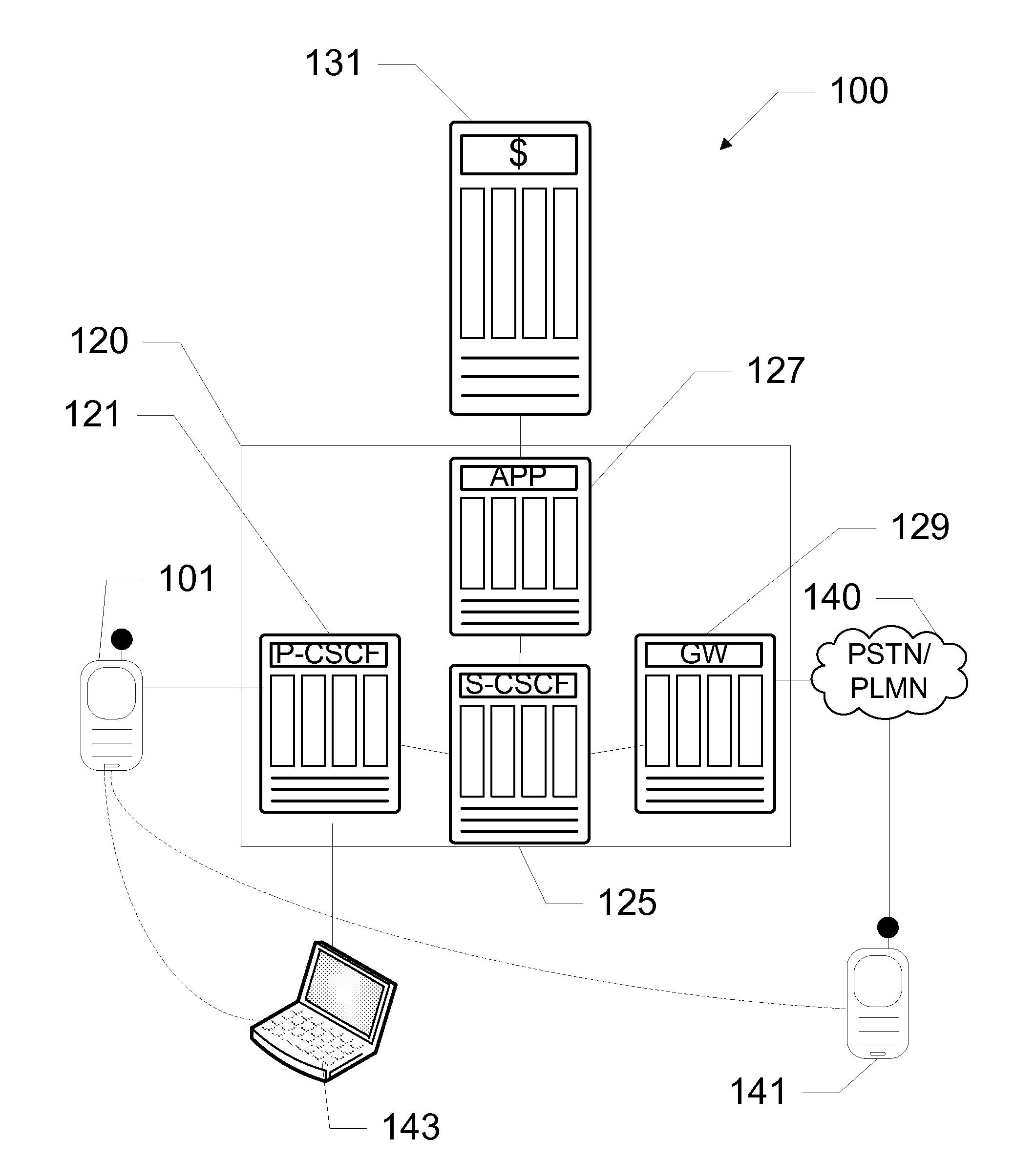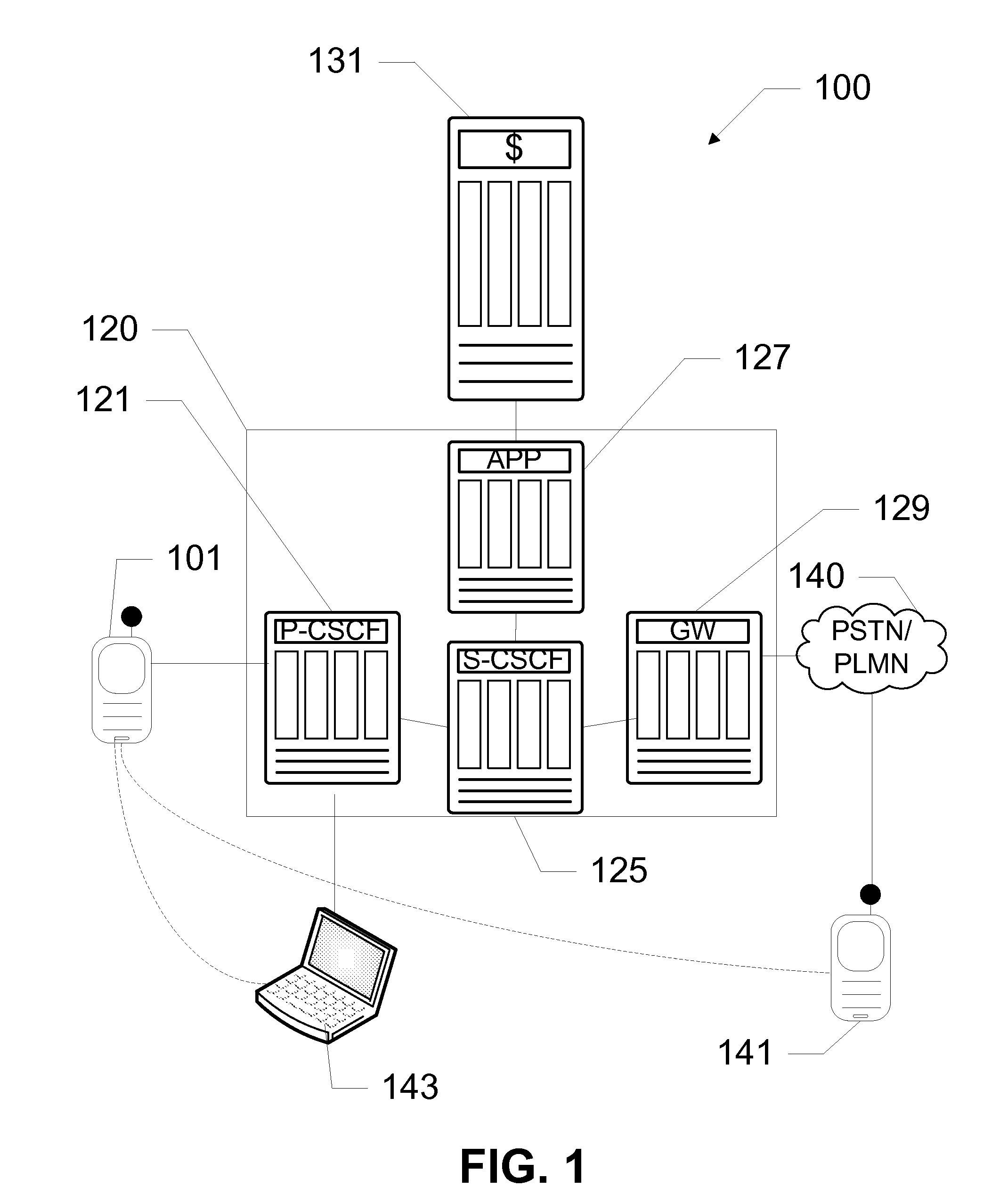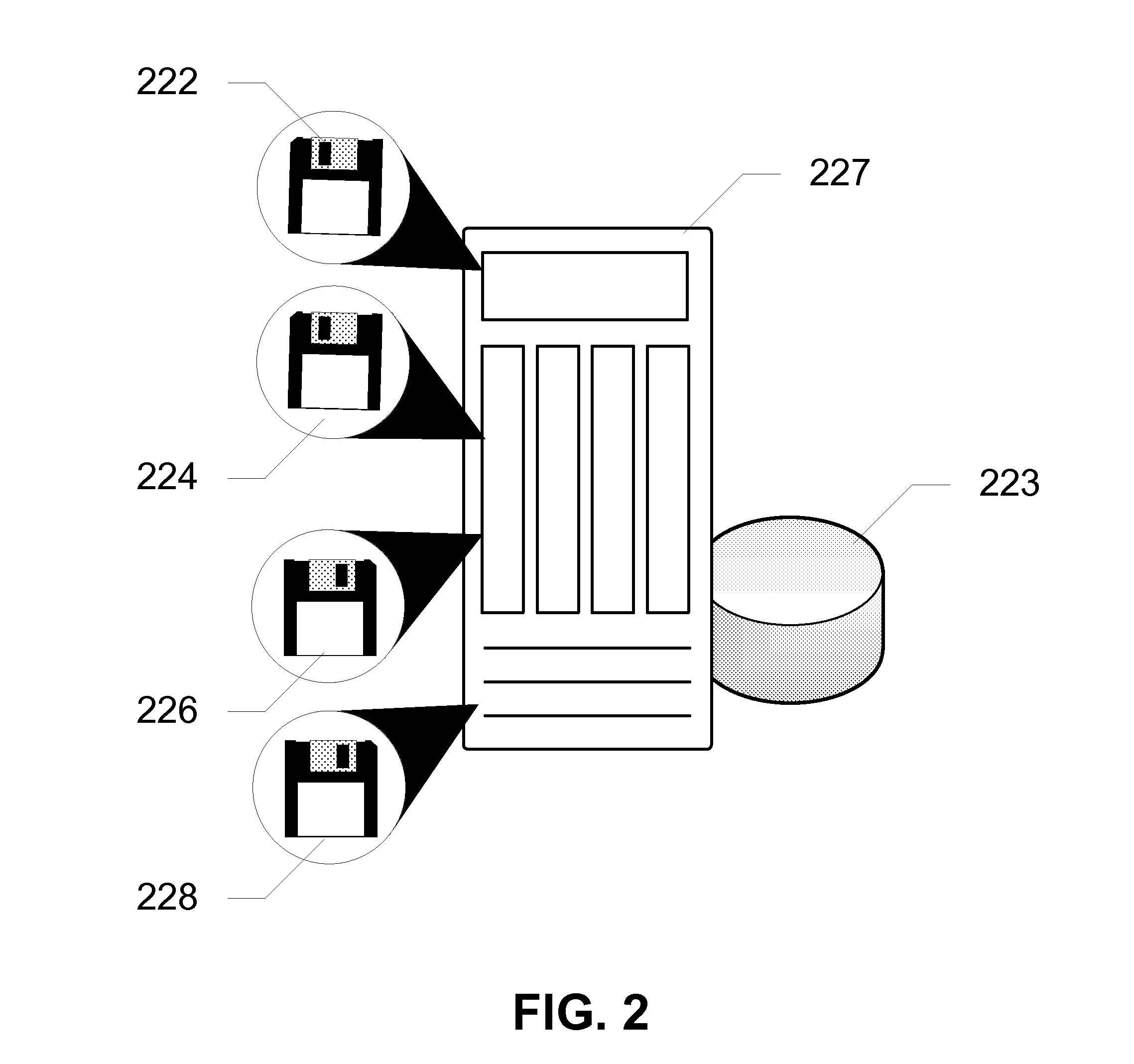[0008]The present invention solves the above problems by providing a plurality of user identities or personas on a single mobile device. The mobile device has a unique address, such as an IP address, to communicate with entities on the IP network, such as an application server. The mobile device further has a plurality of telephone numbers associated with it. The usage of each telephone number may be billed to a separate account. For instance, one telephone number is a business or enterprise account, and the other telephone number is a personal account. Further, each telephone number has a plurality of personas associated with it. Each persona has its own visual interface on the mobile device and a corresponding set of rules. The application server on the network routes incoming connections to a specific persona on the single mobile device based on the plurality of rules, which are stored on the network. The plurality of rules filters incoming connections based on telephone number, time, and categories of contacts, and varies based on the associated persona. The rules can be edited by a user of the mobile device via an interface. The interface is accessible via an application on the mobile device, or via another device such as a personal computer. The incoming connection can be a telephone call, a text or multimedia message, an e-mail message, etc. When receiving an incoming connection, the originating number and the called number are both displayed on the device. For outgoing calls, the user chooses a persona to dial out from, or logic on the device or on the network automatically selects the appropriate persona. A SIP stack, which may be open-source, on the mobile device enables seamless communication with an IP multimedia subsystem, wherein the server is an application server. The application server uses SIP to set up a real-time transport protocol (RTP) session. The session may be a secure IP tunnel, or a secure link using IPSec. Each persona on the device may be a separate virtual machine such that they are securely isolated from each other. Non-IP connections such as regular PSTN voice calls can be routed to the mobile device from the IP network using one or more gateways.
[0009]In one exemplary embodiment, the present invention is a server on a network for routing a connection request to a mobile device on the network, the mobile device having a unique network address. The server includes a processor; a memory in communication with the processor; a database on the memory, the database including a record for the mobile device, the record including one or more telephone numbers corresponding to the mobile device and one or more personas corresponding to each of said one or more telephone numbers; and logic on the memory, the logic enabling the server to receive a connection request from a remote device on the network, determine that the destination for the connection request is the mobile device, activate one or more services in response to the connection request, associate a persona with the connection request, and initiate a session between the remote device and the associated persona on the mobile device. The association of the persona with the connection request is performed by referring to a plurality of rules corresponding to the record for the mobile device, the plurality of rules being adjustable by the user via a configuration manager on the mobile device.
[0010]In another exemplary embodiment, the present invention is a system for multiple uses of a mobile device. The system includes an application server on a network, the application server including a database having a record for the mobile device, the record including one or more telephone numbers corresponding to the mobile device, one or more personas corresponding to each of said one or more telephone numbers and a plurality of rules related to each of said one or more personas; and a mobile device having an interface for each of said one or more personas, a connection manager to send and receive connection requests to and from each of said one or more personas, and a configuration manager to enable a user of the mobile device to edit the plurality of rules in the database. The application server receives a connection request from an originating remote device on the network, determines that the destination for the connection request is the mobile device, activates one or more services in response to the connection request based on the plurality of rules, associates a persona with the connection request based on the plurality of rules, and initiates a session between the remote device and the associated persona on the mobile device.
[0011]In yet another exemplary embodiment, the present invention is a method for using a mobile device for multiple purposes. The method includes receiving a connection request from a transmitting remote device on a network; determining that the connection request is destined for the mobile device; activating one or more services in response to the connection request based on a plurality of rules stored on a database, the database having a record for the mobile device, the record including one or more telephone numbers corresponding to the mobile device, one or more personas corresponding to each of said one or more telephone numbers, wherein the plurality of rules relate to each of said one or more personas; associating a persona with the connection request based on the plurality of rules; and initiating a session between the source remote device and the associated persona on the mobile device. The session is initiated using the Session Initiation Protocol (SIP). The one or more services may include sending to voicemail, call forwarding, and call blocking, among other network features. The plurality of rules allows a user to activate services depending upon any combination of a date, time of day, location of the mobile device, address of the incoming connection request, persona, and category of incoming connection request.
 Login to View More
Login to View More  Login to View More
Login to View More 


